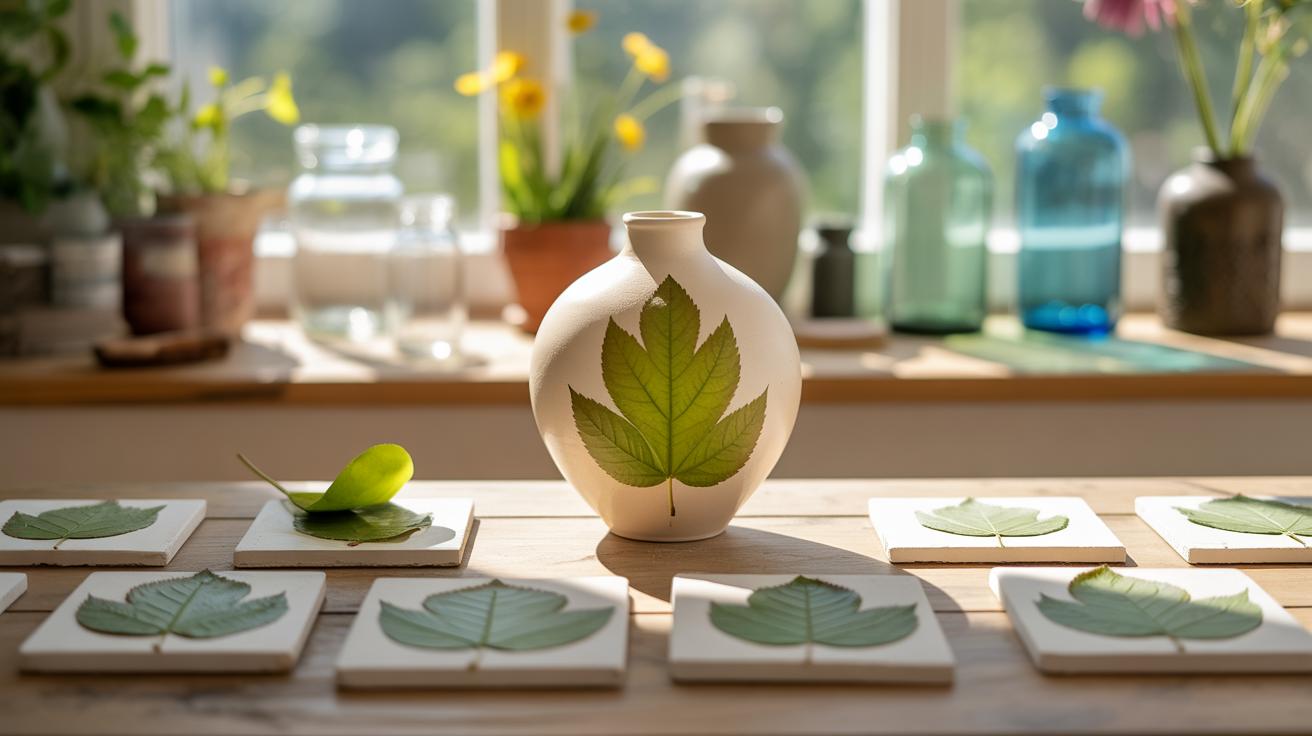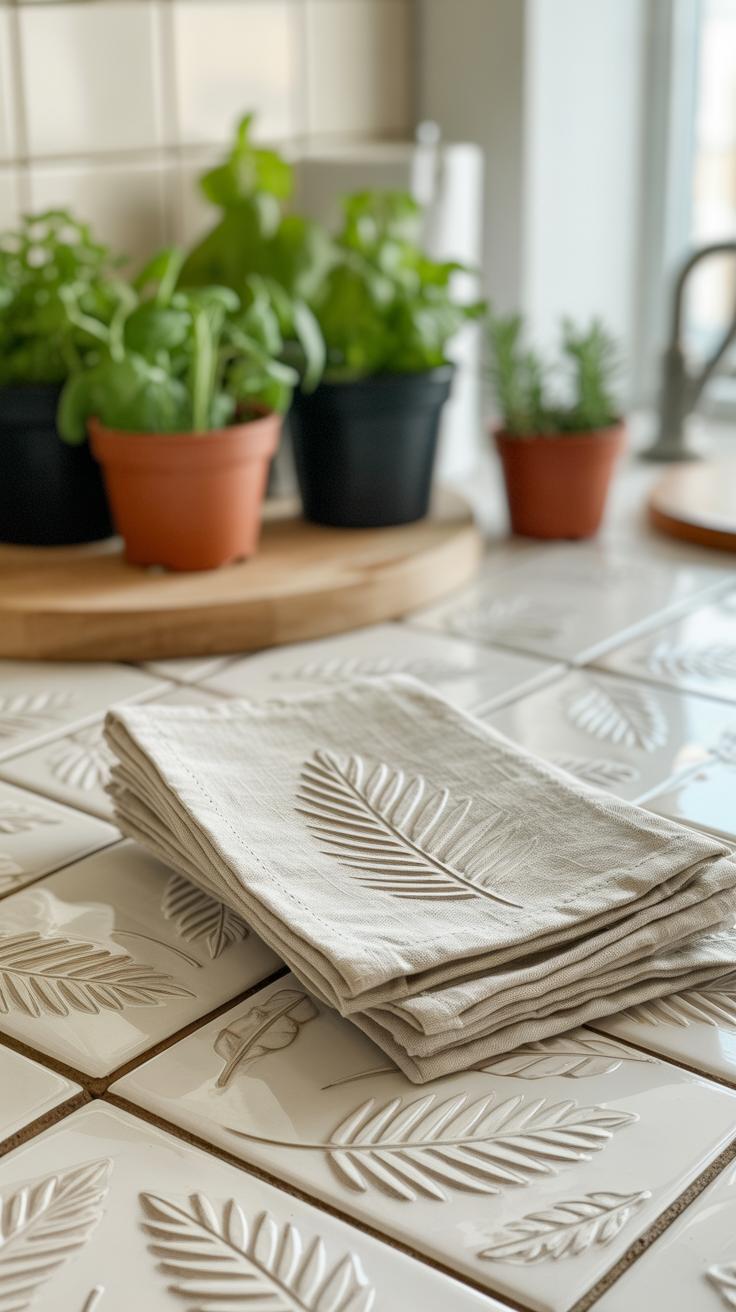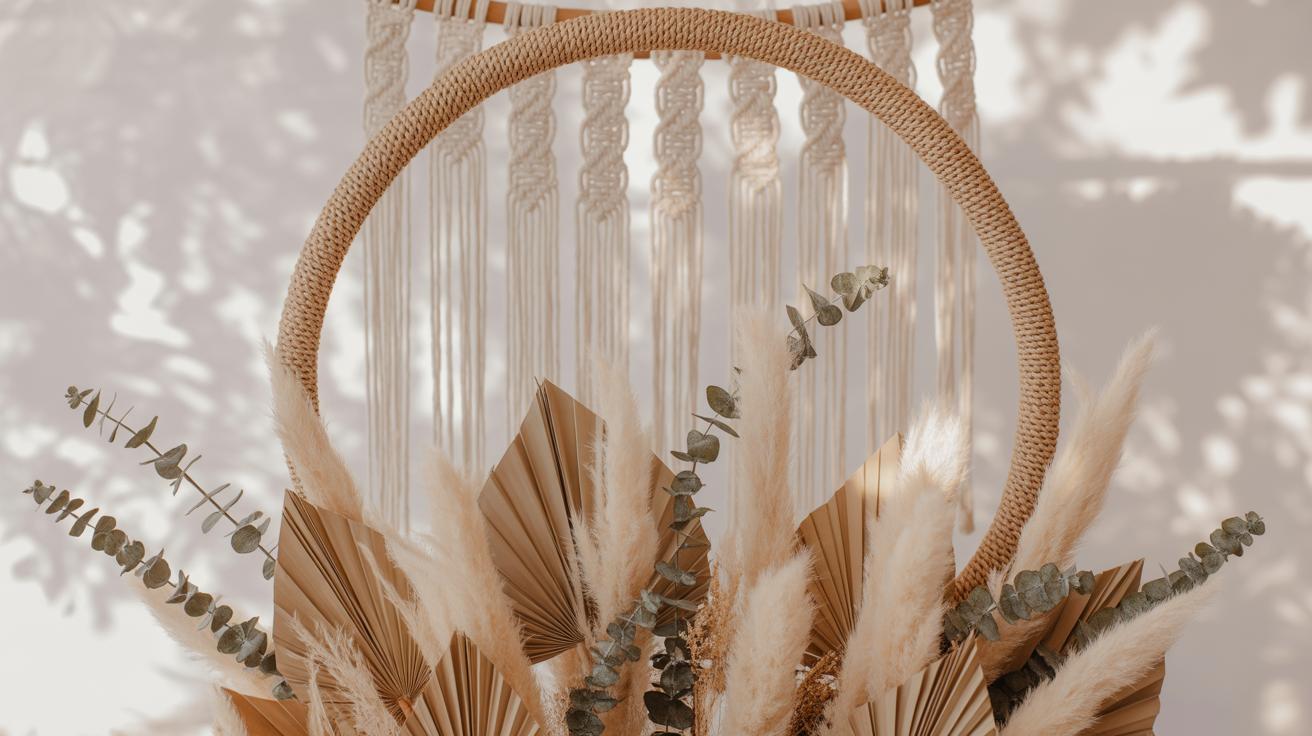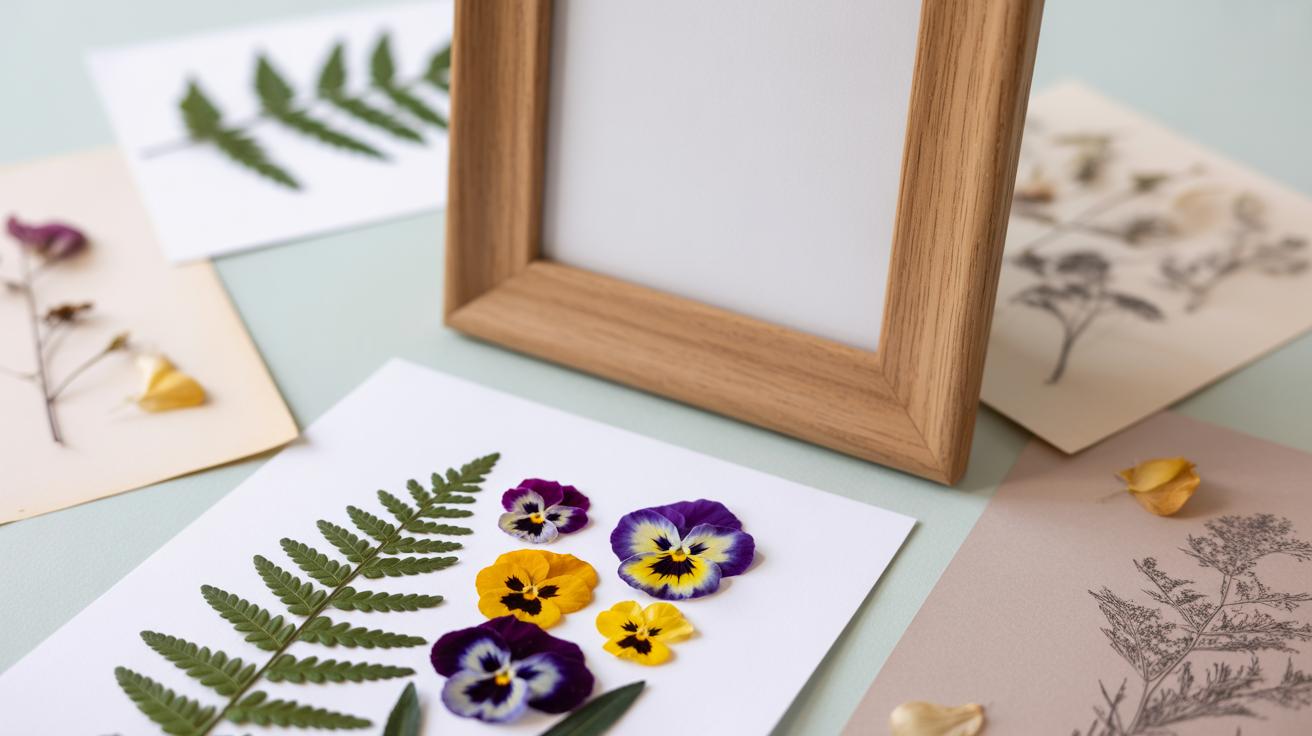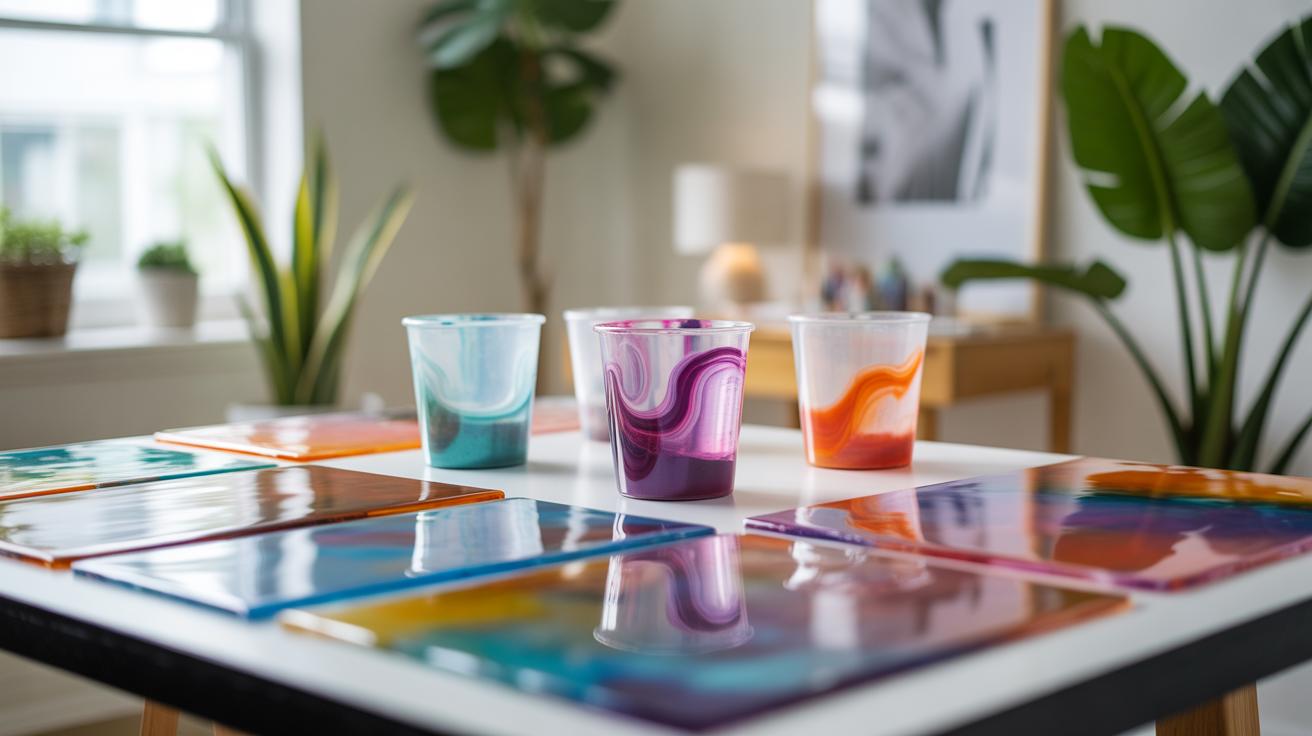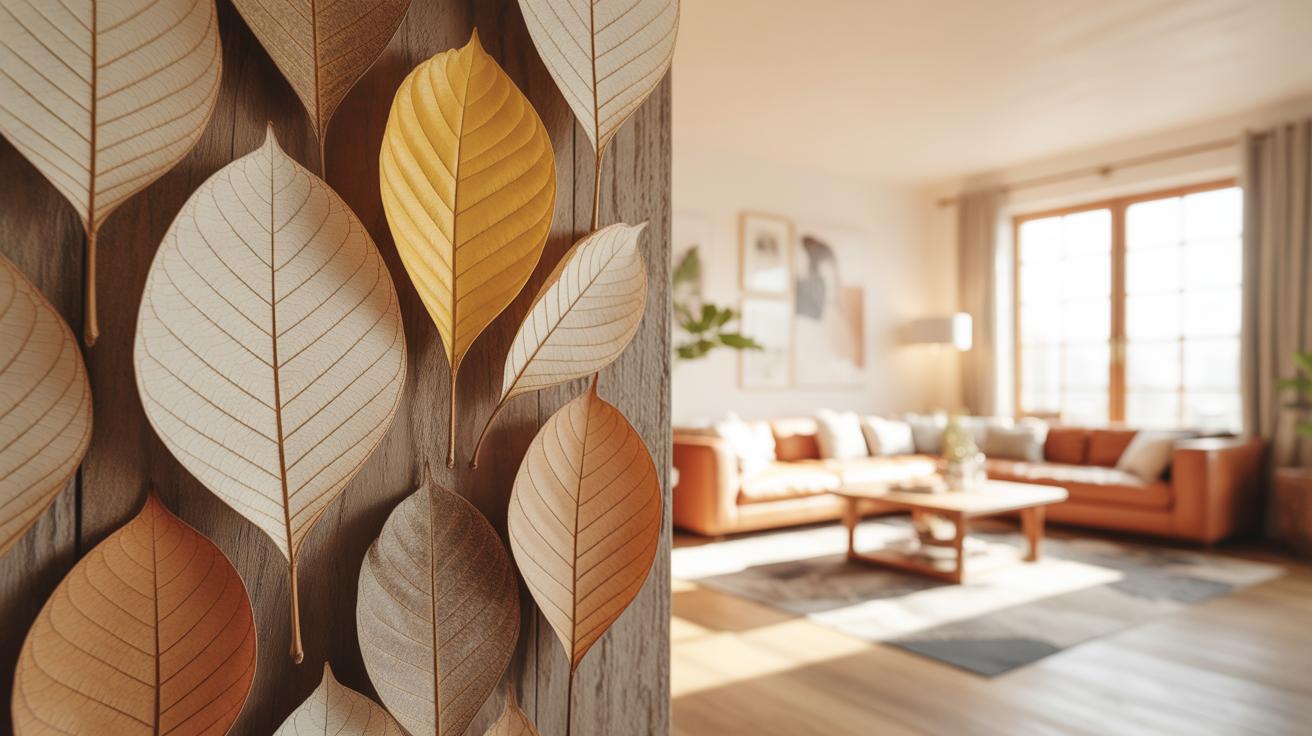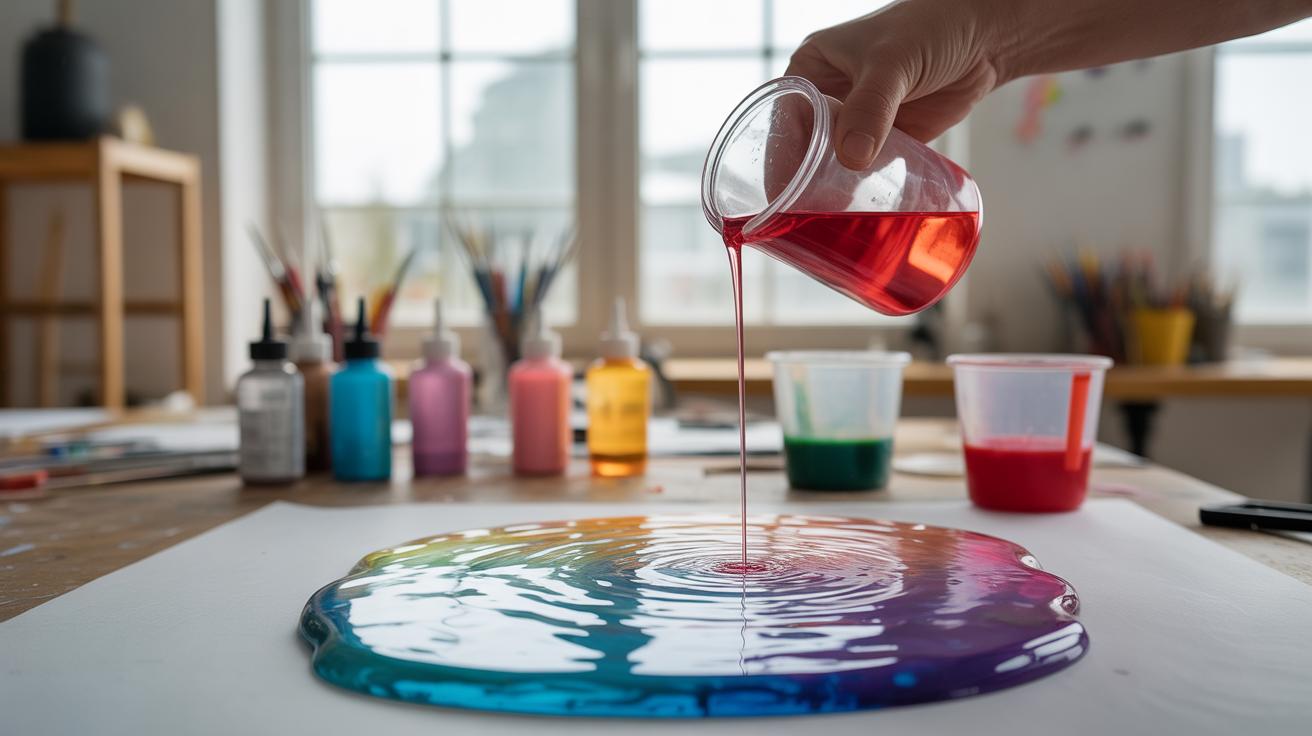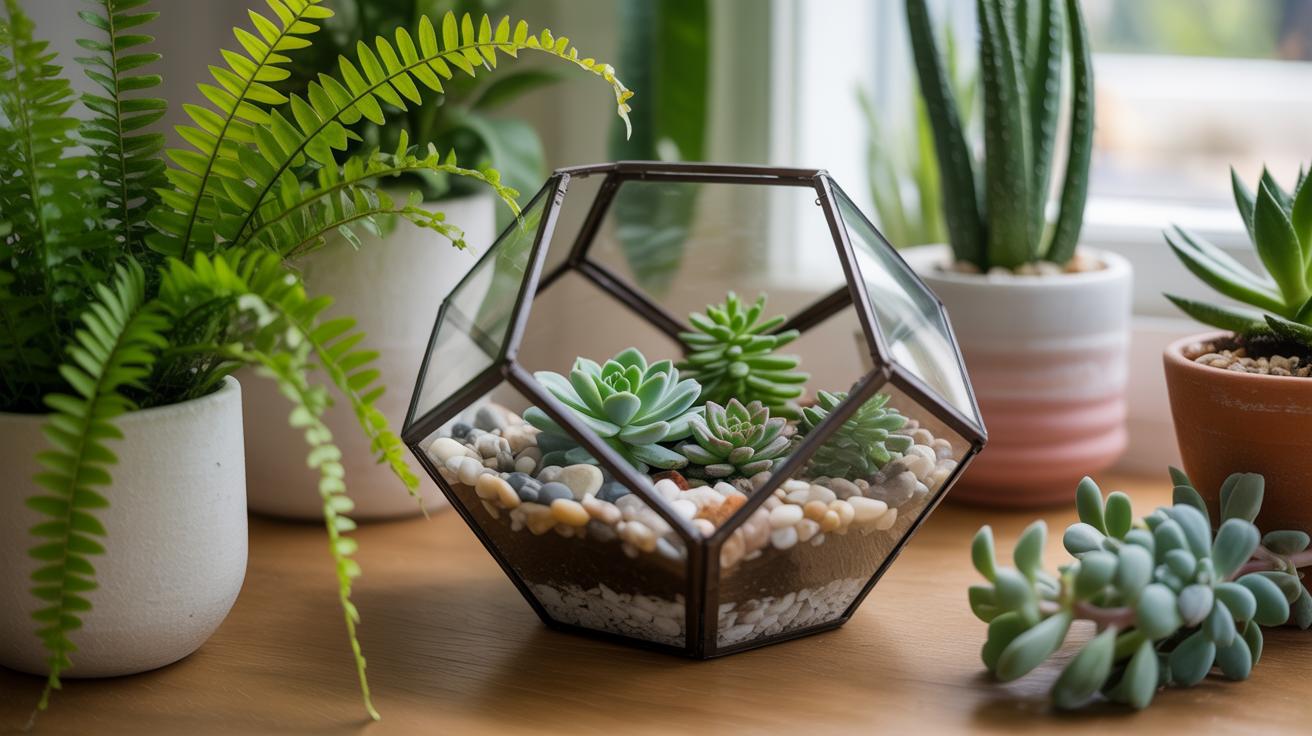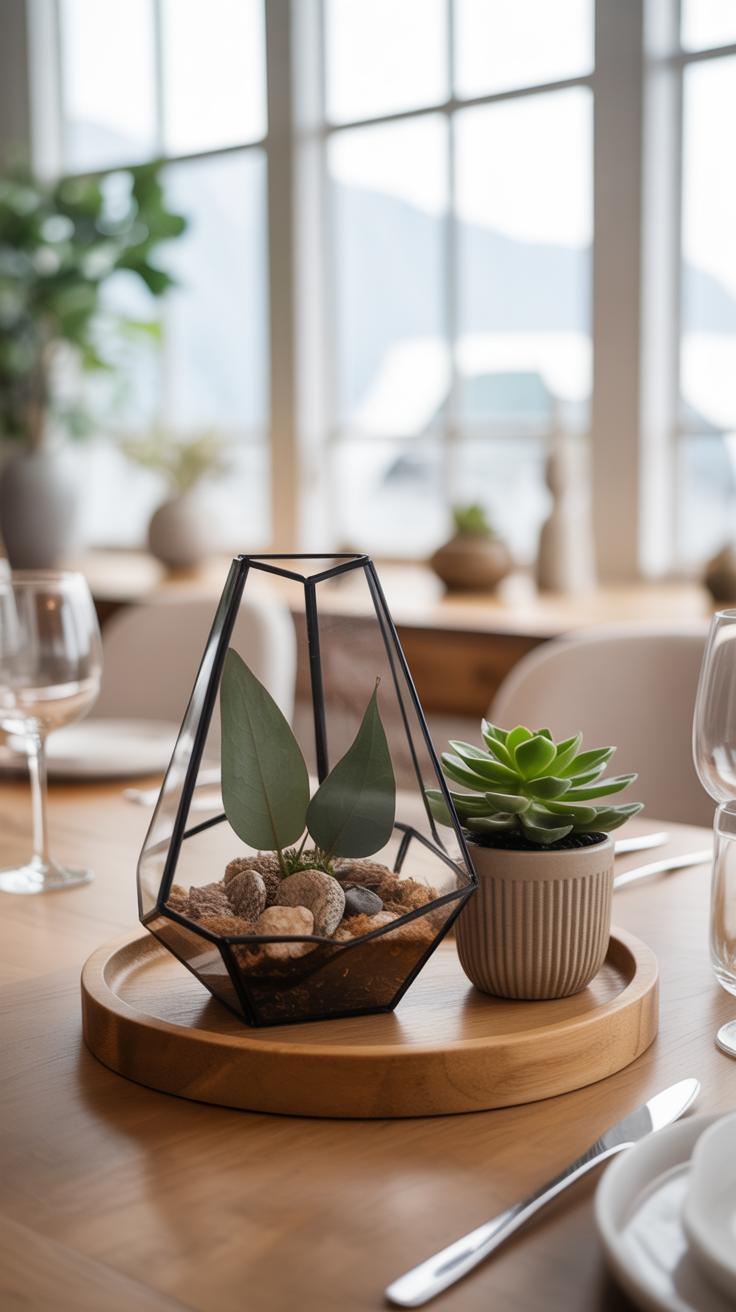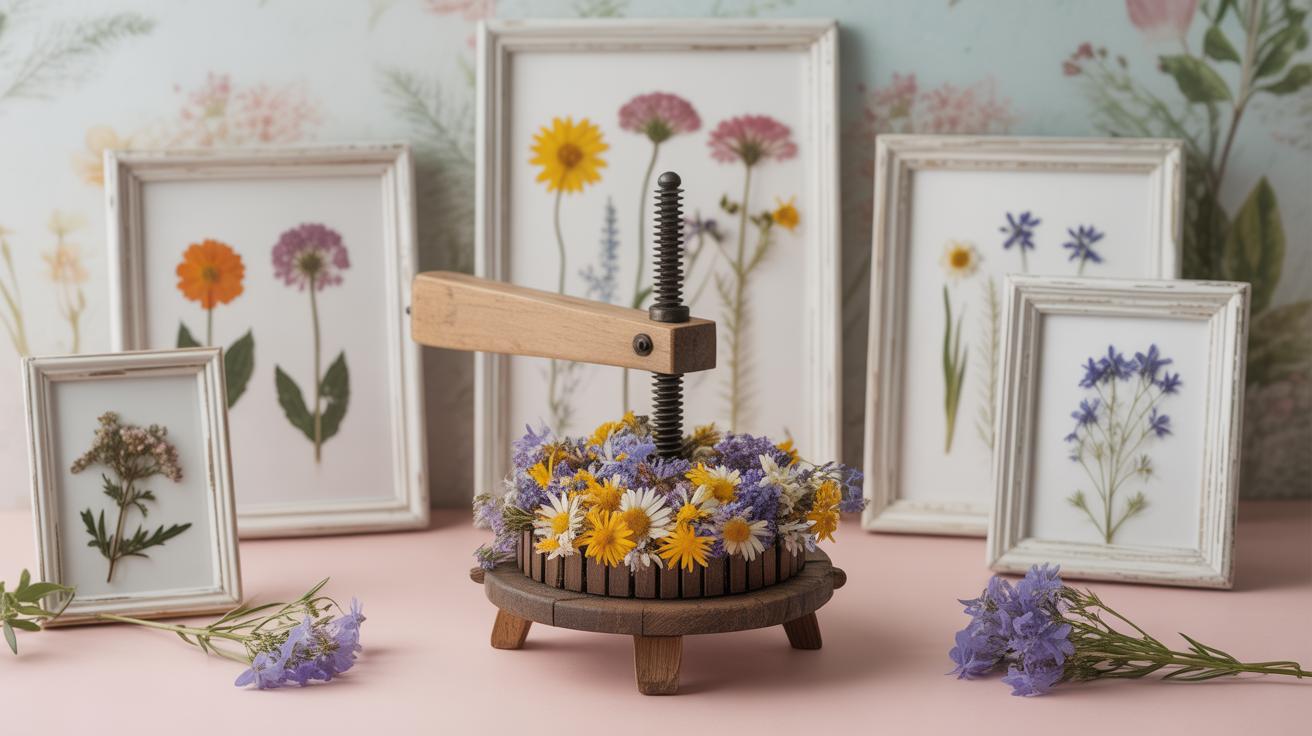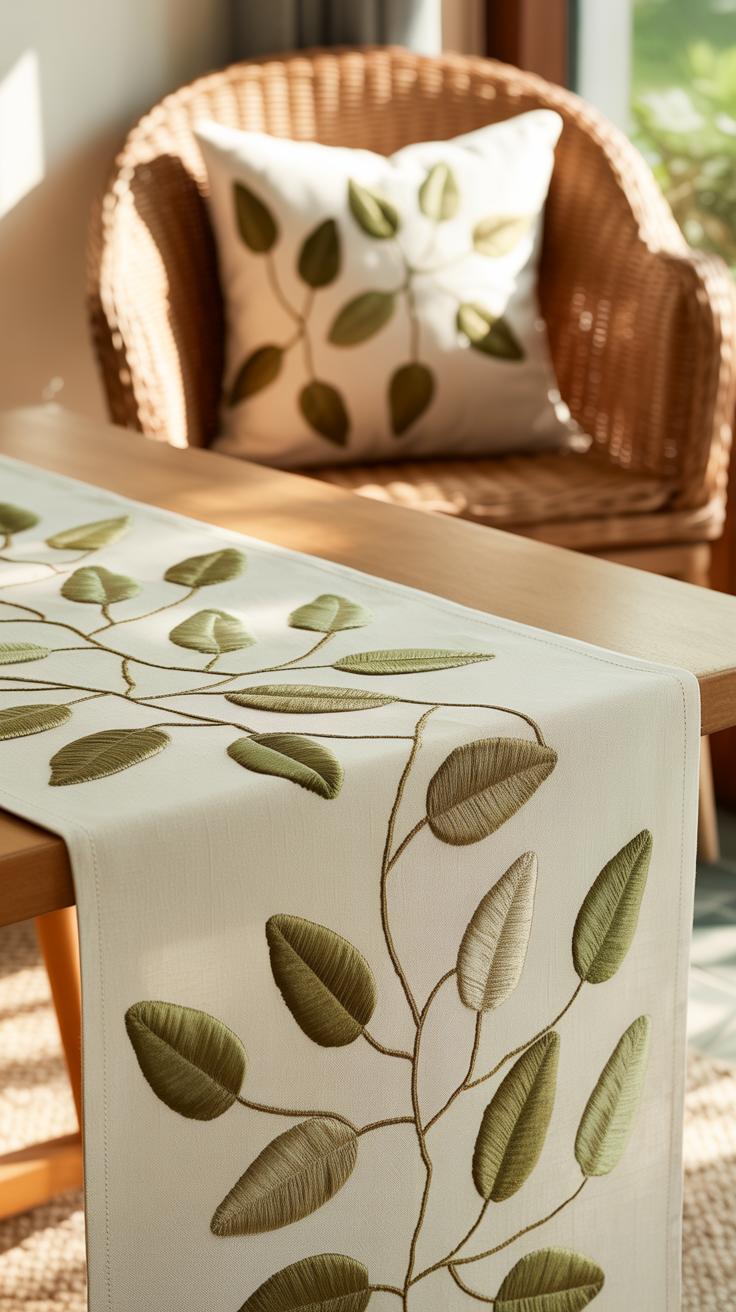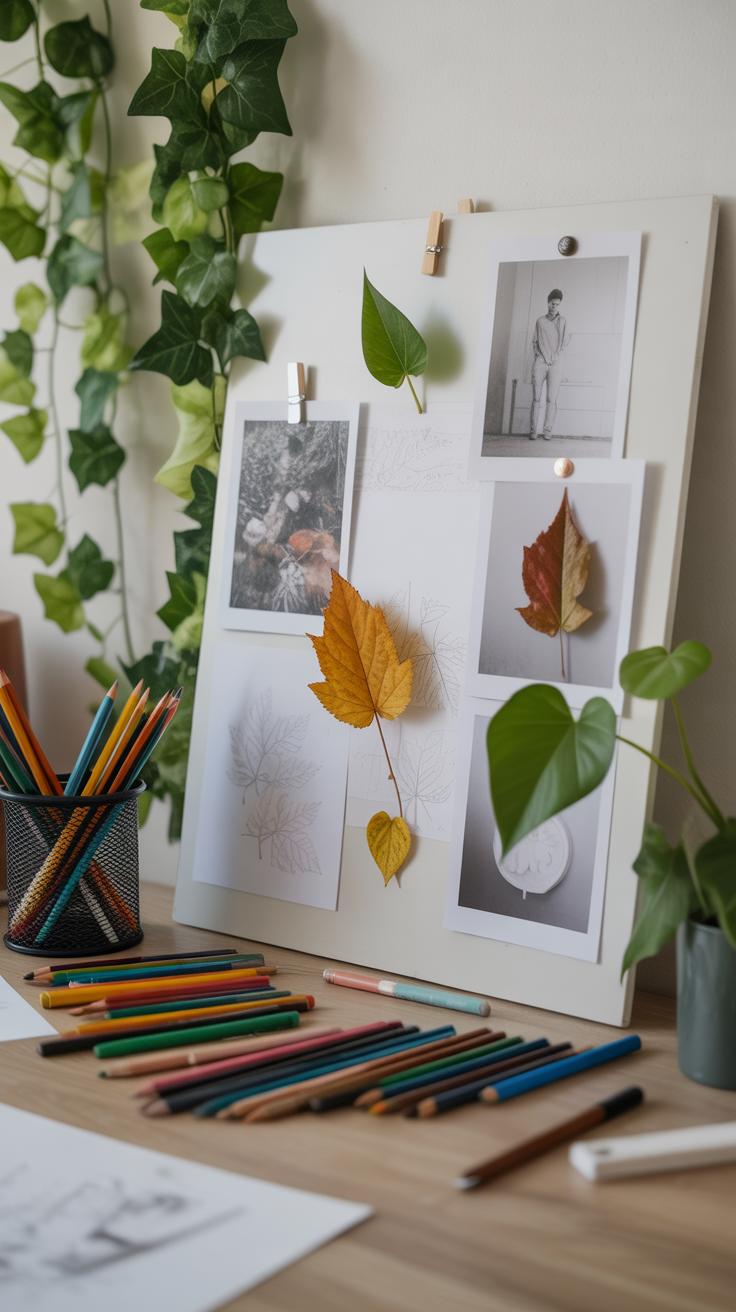Introduction
Sustainable Style Leaf Projects For Home Decor bring nature’s charm indoors. Using leaves in decor offers a unique way to add earthy beauty to any space. It also supports eco-friendly living by repurposing natural elements creatively. This article explores how you can incorporate leaf projects into your home while keeping style and sustainability in balance.
You will learn practical ideas for leaf projects that are simple to do. Whether you want wall art, table decor, or accents that invite freshness, leaves provide versatile options. Follow along as we guide you through project ideas, preparation, care, and styling tips that fit your sustainable home style.
Understanding the Benefits of Leaf Projects in Home Decor
Leaf projects bring a unique blend of charm and purpose to your home decor. When you incorporate leaves into your design, you’re working with something directly from nature—and that connection often feels grounding. Beyond just looking nice, they can soften a room’s atmosphere, adding texture and depth without overwhelming the space. I’ve noticed that when I add a leaf-based piece, like a carefully pressed leaf in a frame or a garland of fresh leaves, it draws the eye in a quiet, inviting way. It’s subtle but effective.
On the sustainability side, leaf projects often use fallen leaves or those collected sustainably, which means no harm to living plants. This makes them low-waste options that don’t rely on synthetic materials or plastics. This small choice reduces your environmental footprint. Also, leaves break down naturally over time, so if you do discard them, they won’t linger as harmful waste.
There’s something compelling about decorating with leaves—they’re simple yet diverse, and you get an evolving palette through the seasons. Plus, crafting with leaves encourages mindfulness about nature’s cycles. You begin to notice different shapes, colors, and even scents, which adds a sensory dimension that’s often missing from typical decor items.
Why Choose Leaves for Decorating
Leaves are, in many ways, an underrated material. You can find them almost everywhere — from your own yard to nearby parks. Their availability makes them super accessible without needing to buy anything extra. I think this ease is part of their appeal. You don’t have to hunt down special supplies to start a leaf project.
Their natural beauty is another strong point. Each leaf has its own shape, vein pattern, and color, offering endless variety. Some leaves turn vibrant reds or golds in fall, others stay deep green, lending a fresh look all year long. This variety keeps your decor interesting without feeling artificial or forced.
At the same time, leaves are eco-friendly. They’re biodegradable, renewable, and don’t require energy-intensive processes to prepare. Choosing leaves over synthetic decorations means less plastic waste and fewer emissions associated with manufacturing. That’s a small decision that can add up, especially if more people try it.
Environmental Benefits of Using Natural Materials
Natural materials like leaves change the environmental impact of our decorating habits. Unlike many mass-produced decor items, using leaves introduces less pollution throughout their lifecycle. For instance:
- No chemical treatments are needed.
- Minimal packaging reduces waste.
- Energy use is drastically lower since you’re not relying on factory-made goods.
This reduces your home’s carbon footprint in ways that might feel small at first but are meaningful over time. Plus, natural items encourage you to recycle or compost them once you’re done, closing the loop neatly. I find this cycle quite satisfying, too — it feels like you’re contributing to nature’s balance rather than taking from it endlessly.
Using leaves also prompts people to slow down and appreciate natural textures and imperfections, which can be refreshing in a world full of polished plastic and mass production. You might start to notice a leaf’s delicate translucence or the way its edges crisp as it dries — details easy to miss elsewhere.
Types of Leaves Ideal for Home Decor Projects
When picking leaves for your home decor, texture matters more than you might expect. Rough leaves, like oak, give a rustic feel and hold paint or glue well. Meanwhile, smoother leaves such as magnolia lend a polished, elegant look and can be delicate, so careful handling is key.
Size plays a big role too. Large leaves like monstera or banana provide bold shapes perfect for statement pieces, while smaller ones—think eucalyptus or fern—work well for detailed patterns or layering. Durability is a mixed bag. Some leaves dry well and keep their shape, while others curl or crumble quickly. Experimenting a bit lets you find the sweet spot between aesthetics and resilience.
Have you noticed how some leaves almost seem made to last? The thick, waxy ones usually do, which is handy when crafting items you want to enjoy for a while.
Common Leaves Used in Crafts
Some leaves keep showing up in craft stores and DIY projects for good reasons. Here’s a quick list of favorites:
- Maple – its distinctive lobes create intriguing silhouettes and it presses flat easily.
- Fern – for a delicate, feathery texture that adds lightness.
- Monstera – large with natural holes; great for modern, tropical vibes.
- Magnolia – thick and glossy, offering durability and a smooth finish.
- Eucalyptus – small, round, and fragrant, ideal for wreaths and bouquets.
- Oak – sturdy and textured, excellent for rustic, autumn-themed designs.
People seem drawn to these leaves because they combine beauty with practical features—mostly simplicity of pressing and their ability to retain color for a reasonable time.
Seasonal and Evergreen Leaf Options
Seasonal leaves often bring vibrant colors that are unmatched, like the fiery reds of fall maples or the golden hues of birch. Using these can instantly evoke a certain time of year, which can be appealing—though, they tend to be fragile and more short-lived.
Evergreens, by contrast, keep their color and shape year-round, making them dependable for longer-lasting decor. Pine needles or holly leaves provide texture and stay green through winter, which can add life to otherwise bare spaces. Of course, evergreens sometimes lack that punchy color change, so their appeal lies more in constant greenery and structure.
So, do you prefer the fleeting beauty of seasonal leaves, or the steady presence of evergreens? Both have their place. It might depend on the mood you want to set, or whether you want to refresh your decor regularly.
Preparing Leaves for Your Home Decor Projects
When you set out to collect leaves for your decor, it’s easy to just scoop up whatever looks nice—but taking a bit of care makes all the difference. First, think about where you’re picking. Try to avoid plucking live leaves from healthy plants, especially ones still growing. Fallen leaves from the ground are usually your best choice. Not only does this protect nature, but the leaves are often dryer and better suited for preservation.
Look for leaves that don’t show spots of mold, insect damage, or excessive brittleness. Sometimes, leaves that seem too dry can crumble the moment you touch them—so gently test a few before hauling them home. If you harvest leaves during or right after rain, they might carry residues or mildew, so give them some time to dry out first.
Cleaning leaves isn’t complicated but does need a gentle touch. Wiping them softly with a damp cloth or rinsing briefly with lukewarm water works well. Avoid soaking—they might soften too much or lose their color. Afterward, lay leaves flat on paper towels to dry completely. This step prevents unwanted wrinkles and curling later on.
Preserving leaves for lasting decor can take several routes. Pressing is classic: place leaves between sheets of parchment or absorbent paper and weigh them down with books. Depending on thickness, leaves can flatten nicely within a week or two. Drying, on the other hand, involves hanging leaves in a warm, airy spot or using silica gel for quicker results. Each method slightly changes the leaf’s feel and look, so maybe try both to see what suits your project best.
One thing I’ve learned—no single technique fits all leaves perfectly. You might find a leathery magnolia leaf presses well but needs extra drying time. Or a delicate fern frond might require a quicker press to avoid too much color loss. It’s a bit like a small experiment each time, really. What about you—have you ever tried preserving leaves and gotten surprising results?
Creating Leaf Wall Art for a Natural Touch
Start with a clear concept—do you want a single large leaf as a centerpiece or a collection of varied shapes and colors? Lay your leaves out on a plain surface first. This helps you experiment with arrangements before you commit. Sometimes, a random scatter works better than symmetrical rows, but don’t feel pressured to have it perfectly even or balanced.
Use a sturdy background like thick paper, canvas, or wood. I usually prefer neutral tones so the leaves really stand out. Lightly glue each leaf down, allowing space between them if you want a minimal look, or overlap for a more textured effect.
Try grouping leaves by size or color. Or mix types for a richer natural collage. I once made a piece where I arranged leaves in a loose spiral—it was surprisingly calming to focus on those subtle curves.
When it comes time to hang, think beyond the classic frame. Clipboards, wooden hangers, or even natural twine can give your art an organic vibe. Place your leaf art in well-lit spots—but avoid direct sunlight to keep the colors from fading too fast.
Simple Leaf Collage Techniques
A straightforward way to create leaf collages is to build layers. Start with larger leaves as a base, then add smaller ones on top. This adds depth and makes the piece less flat.
Another technique is tearing leaves instead of using whole specimens. It gives edges a rougher, less predictable look that might feel more dynamic on your wall.
You can also mix dried leaves with pressed flowers or small twigs for contrast. If you want to keep it very simple, glue leaves randomly but consistently spaced across the background—sometimes simplicity has its own charm.
I’ve found that using a spray adhesive works well—it lets you reposition leaves briefly before they stick, which helps avoid frustrating mistakes. Do you prefer a neat grid or something more wild and freeform? Both work, really.
Framing and Displaying Leaf Art
Choose a frame that complements your decor and the leaf colors. Light wood frames often bring a warm, natural feel, while black or white frames keep things modern and clean.
Glass can protect your piece but sometimes mutes the texture. Floating frames work nicely—they suspend the art inside, so leaves don’t get pressed flat and maintain their dimension.
You might want to hang your art in groups, mixing different leaf art styles or sizes to create a small gallery wall. Don’t worry if your frames don’t exactly match—uneven groupings can add interest.
Try hanging one piece slightly off-center or at eye level where it naturally draws curiosity. Experimentation is key—you might be surprised which spots bring your leaf art to life the most.
Designing Leaf Centerpieces for Tables and Shelves
Creating leaf-based centerpieces can bring an unexpected sense of calm to your living spaces. Whether it’s a dining table or a simple shelf, a well-crafted arrangement adds a quiet freshness that’s hard to match. Start by choosing a base—perhaps a shallow bowl, a glass vase, or even a wooden tray. Then, think about layering leaves thoughtfully. You don’t need perfect symmetry; slight irregularities give a more organic feeling.
Try mixing large broad leaves with slimmer, more delicate ones to create gentle contrasts. Playing with height can make your centerpiece less flat—some leaves stand upright while others lie low, encouraging the eye to wander. If you want a splash of color, subtle veins or hints of autumn hues can naturally brighten things without overpowering the space.
Using Fresh and Dried Leaves Creatively
Fresh and dried leaves offer very different vibes—fresh ones feel lively but fade fast; dried ones bring texture and permanence but sometimes look brittle. Why not combine both? I’ve found that fresh leaves provide lushness, while dried ones add structure and a muted tone that softens bright spaces. It’s like balancing energy with calm.
Consider how fresh leaves glisten lightly after misting, catching sunlight in a way dried leaves can’t. On the other hand, dried leaves—maybe curled or cracked—carry a history that can make your arrangement feel more grounded, even rustic, without trying too hard.
Combining Leaves with Other Natural Elements
Leaves don’t have to stand alone. Pair them with thin branches for height or smooth stones for weight and contrast. Flowers can add pops of unexpected color or delicate softness, but don’t overcrowd. Sometimes just one or two buds nestled among leaves make a quieter statement. I once placed a few moss-covered stones alongside eucalyptus leaves on a coffee table—it felt like a mini forest scene inside, calming but uncomplicated.
Try experimenting with different textures together. Rough bark, smooth stones, or even pinecones can break monotony and invite touch. It’s surprising how such simple natural materials can transform a bare surface into something almost alive, subtly changing the room’s energy without declaring itself loudly.
Incorporating Leaf Themes in Everyday Home Items
Bringing leaf patterns into everyday objects can feel like weaving a little nature into your daily life. Cushions are an easy place to start—think about choosing covers with subtle leaf embroidery or prints that echo the shapes you see outdoors. You don’t have to go bold. Sometimes, a faint outline of a fern or a simple palm leaf silhouette on a cushion can quietly change a room’s mood.
Consider lampshades with cut-out leaf shapes or fabric with leaf prints that allow light to filter through interesting shadows. They create a soft, natural effect that you might not expect but naturally fits with a sustainable home vibe. Curtains, too, can gain a fresh touch with leaf patterns—whether printed or woven. Linen curtains with delicate leaf garlands or bold tropical leaves can alter how your room feels during different times of the day.
Leaf motifs in upholstery and pillows call for careful selection. Natural colors—greens, burnt oranges, muted browns—help keep the feel grounded. Mixing fabrics with different leaf designs can work, but try to keep a consistent color palette to avoid chaos. For example:
- Choose cotton or linen with linen having ethereal leaf prints for softness.
- Look for jacquard or tapestry fabrics where leaf patterns add texture, not just color.
- Explore hand-printed or block-printed fabrics, which often have charming irregularities.
Accessories rounded out with leaf designs tie everything together. Look at small things: ceramic vases embossed with leaf shapes, wooden trays with carved leaves, or candle holders with leaf patterns punched through metal. These accessories serve as quiet reminders of your commitment to the natural theme, without overwhelming the space.
You might find yourself wondering—does this pattern work here? Sometimes, yes. Sometimes, no. But that’s the charm. Decorating with leaf themes in everyday objects is like learning an ongoing conversation with your space. It evolves, and it isn’t always perfect—and maybe it doesn’t need to be.
Maintaining and Caring for Leaf Decor
Leaf decor can brighten a space with a natural touch, but keeping it looking good isn’t always straightforward. Natural leaves dry out, colors fade, and dust settles easily, which can make your beautiful projects seem neglected sooner than you’d like. Still, with a bit of attention, you can stretch their lifespan longer than you might expect.
Cleaning Natural Leaf Decorations Safely
When it comes to cleaning leaf decor, gentleness is key. Using a soft, dry cloth or a soft brush to remove dust usually works well. If you find a stubborn spot, try dampening the cloth slightly—but never soak your leaf items, especially if they’re real or pressed. Water can make them brittle or cause mold. Some people swear by using a soft paintbrush to get into crevices without damaging the delicate edges. It might seem slow, but it’s effective and safe.
Protecting Leaf Projects from Damage
Your leaf decor can take a hit from sunlight, humidity, and handling more than you might think. Direct sunlight fades natural pigments faster than you’d expect, so placing your projects away from bright windows helps. Humidity is trickier—too much can cause mold or curling, while too little might make leaves brittle. A stable, room-temperature spot with moderate humidity seems best, though it’s hard to get just right. Also, consider framing or coating your leaf art with a protective finish like clear varnish or resin to reduce wear. And yes, try to avoid constant touching; oils and pressure will wear down leaf surfaces more quickly over time.
Tips to Keep Your Leaf Decor EcoFriendly
You want your leaf projects to stay kind to the environment, right? That means thinking about the materials and what happens after your decor has served its purpose. It’s easy to overlook how some adhesives or paints might introduce chemicals or microplastics into your living space and, eventually, the planet.
Choosing Non-Toxic Materials and Adhesives
When picking glues and sealants, look for ones labeled non-toxic or biodegradable. Many traditional craft glues contain solvents or synthetic ingredients that don’t break down naturally. I once tried a popular superglue without checking—it smelled strong and made my workspace quite unpleasant. Switching to a plant-based adhesive felt better, even if it took a bit longer to dry.
For paints and sealants, water-based options are preferable. They dissolve in water rather than chemicals, reducing toxic residues. Beeswax or natural oils can act as sealants, giving your leaf decor a subtle shine and some protection without harsh chemicals. It’s not always about the quickest fix but about how the materials age and break down.
Recycling and Composting Old Leaf Projects
When your leaf decor reaches the end of its life, consider how to dispose of it responsibly. If the leaves are untreated and natural, composting is usually the best option. Your homemade wreath or framed leaf art might add organic matter to your garden soil instead of polluting landfills.
If your project uses non-toxic paints or adhesives, sometimes you can carefully peel off parts for reuse or craft something new. Otherwise, try to recycle any paper backing or frames separately. Don’t hesitate to ask yourself: can this be turned into mulch? Could parts be shredded for compost? These small steps can noticeably reduce waste.
Sometimes, though, what seems eco-friendly at first might not break down easily in your local compost system. It’s a bit of a trial and error process, I think. Experiment a little and see what works best for your space and waste facilities.
Finding Inspiration and Personalizing Your Leaf Projects
Gathering Ideas from Nature and Art
Looking closely at nature is a simple, yet often overlooked way to find fresh ideas for your leaf projects. Leaves come in all shapes and sizes—some jagged, others smooth, some veined delicately, others bold and simple. Just walking outside, you might spot a pattern or color combination that sticks with you. It’s not only about copying what you see; sometimes, a twist on a natural form can feel more interesting. You might sketch a leaf’s outline but rearrange it in ways you hadn’t thought of before.
Art galleries, too, hold a quiet power to inspire. Abstract paintings or botanical prints show leaves in ways that play with color, spacing, and texture. You may find yourself drawn to certain styles or compositions, even if you wouldn’t normally describe yourself as an “art person.” I once found a leaf design that looked almost pixelated and tried to translate that into a wall hanging. It didn’t work perfectly but it was worth a shot.
Adding Personal Touches to Decor
When it comes to making your leaf projects truly yours, small choices can shift everything. Think about how you arrange your leaves: clustered tightly or spaced deliberately apart? You can play with natural greens or introduce subtle shades like dusty pink, muted gold, or soft blues—colors that speak quietly but add personality.
Customization might also mean mixing materials, like pairing dried leaves with recycled paper or natural fibers. Try incorporating seasonal elements; perhaps a few autumnal hues or fresh spring greens, changing as the year passes. Making your space a reflection of your style doesn’t mean overdoing it—sometimes less feels more, but only if it’s what you actually like. What kind of leaf project would make you smile every time you see it? That small question might guide your choices better than any style rule.
Conclusions
Leaf projects for home decor are an excellent way to bring sustainable style into your living space. By using natural materials thoughtfully, you create beauty that respects the environment. These projects encourage creativity, resourcefulness, and a closer connection to nature’s simplicity and elegance.
When you embrace leaf decor, you also open the door to endless possibilities for customization. Enjoy crafting personalized designs that reflect your taste and values. Use the ideas and tips shared here to begin your journey toward a greener, more stylish home.

